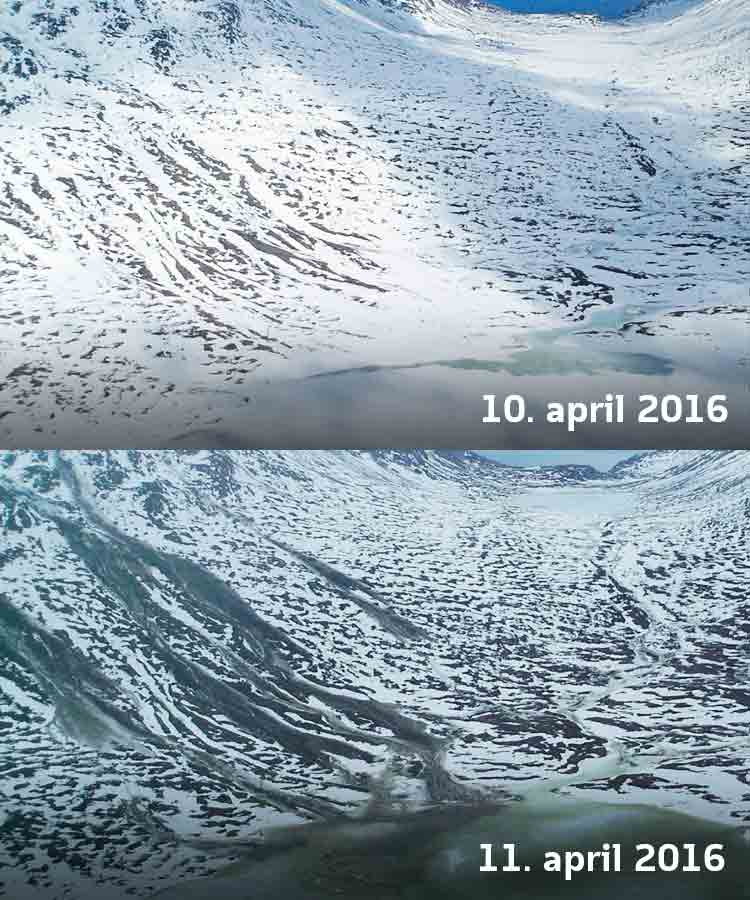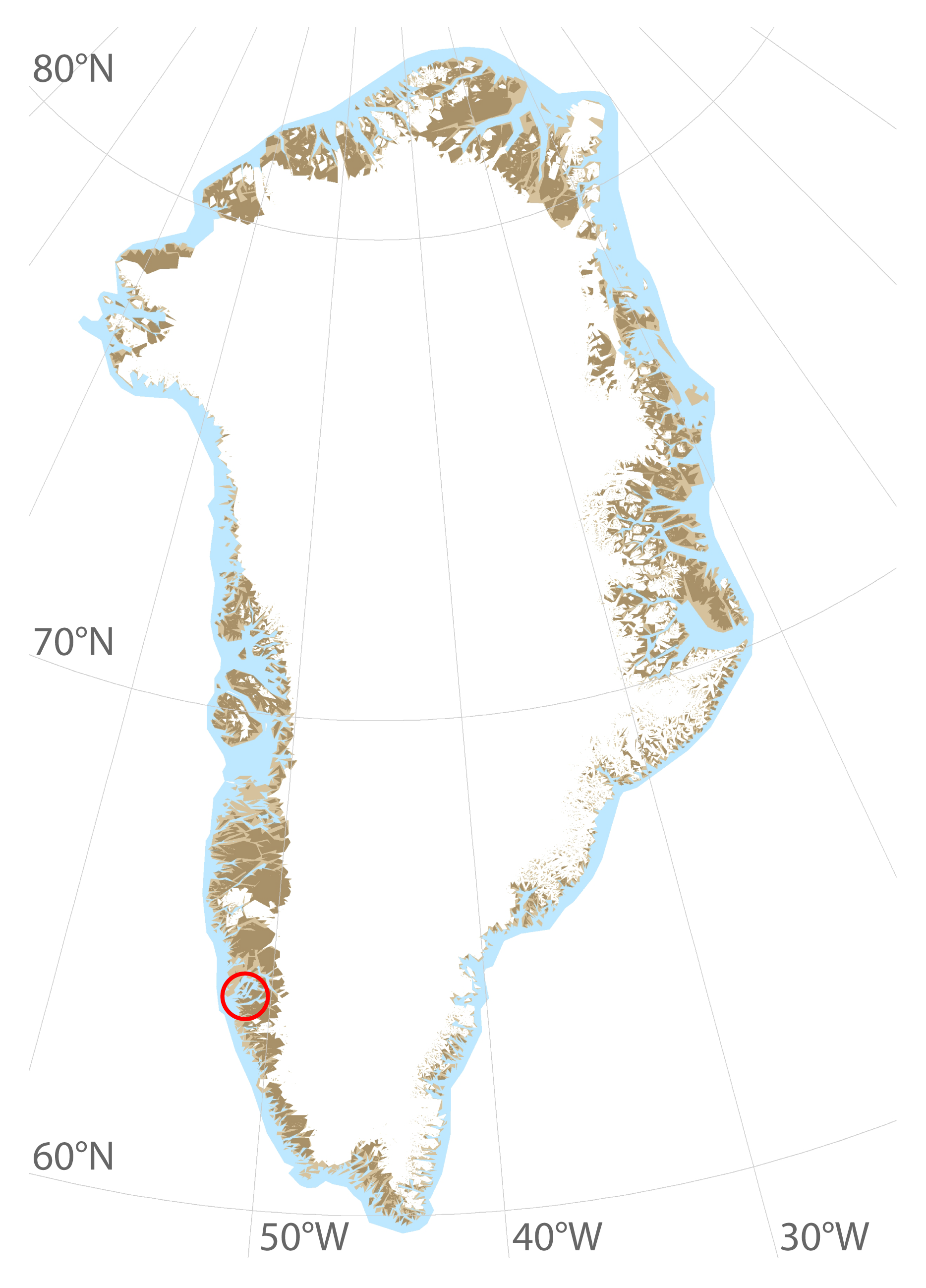
Climate – Remote Sensing
Extreme weather in Southwest Greenland – frequency, magnitude and impact
Extreme weather, slush flows, geohazard, climate warming
Region:
Southwest Greenland
Start year:
2017
End year:
2017
Funding:
The Greenlandic Research Council
Partners:
Jakob Abermann / Stefan Wacker
Project leader
Heavy precipitation, a steep temperature rise and abnormally warm temperatures led to a number of wet snow avalanches in Kobbefjord in April 2016. Such mixtures of slush and mud, termed slush flows in the literature, can be a hazard for settlements and infrastructure. They are closely linked to extreme weather events like the one in 2016, and with the recent warming in Greenland there are indications that their frequency will increase.
The aim of this project is to (I) quantify an extreme event in Southwest Greenland and describe conditions that lead to that, (II) assess the potential of Remote Sensing methods for defining the spatial extent of the April 2016 event. Once (I) and (II) have been answered, our longer climate time series will allow for assessment of recurrence times.

